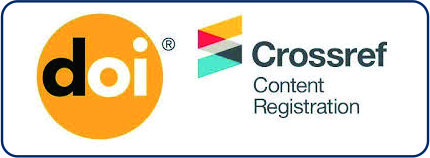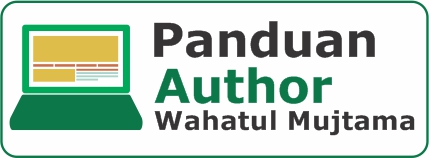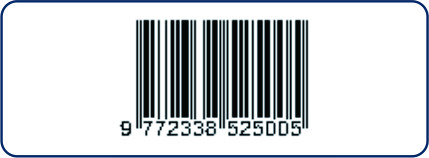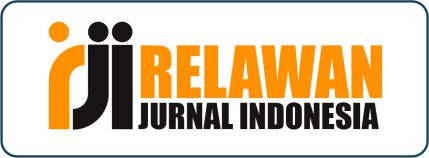Program Pengajaran Bahasa Arab bagi Masyarakat di Kelurahan Tahoa Kabupaten Kolaka
Arabic Language Teaching Program for the Community of Tahoa Village Kolaka Regency
DOI:
https://doi.org/10.36701/wahatul.v2i2.435Keywords:
Tahoa, Arabic, KKN STIBA MakassarAbstract
The purpose of the Real Work Lecture (KKN) STIBA Makassar Batch IV is as a form of community service which is a pillar of the tridarma of universities, especially in the teaching of Arabic as the main program. The method of implementation of the service program begins by mapping the problems and needs of the community using SOAR analysis. After the analysis is done, a work program is prepared that is appropriate and needed by the community. After the analysis is done, it is prepared a work program that is appropriate and needed by the community. Successful work programs include: Simā'an Hafalan Santri, Social Service, Silaturahmi, Tajwid Science Teaching and Arabic Language Teaching as the main program of KKN STIBA Makassar Students. All these programs managed to run well and have shown results that are in accordance with the objectives of the KKN that have been proclaimed, namely the development of Islamic knowledge, increasing the capacity and reading skills of the Qur'an and the Arabic language of the community.
Downloads
References
Adriani, Meni, Idi Warsah, and Syaiful Bahri. Faktor-Faktor Rendahnya Kemapuan Santri Dalam Menghafal Al-Qur’an (Studi Pada Santri Ar-Rahmah. Diss. IAIN Curup, 2018.
Andriani, Asna. "Urgensi Pembelajaran Bahasa Arab dalam Pendidikan Islam." Ta'allum: Jurnal Pendidikan Islam 3.1 (2015): 39-56.
Ainun, Nur, and Ahmad Kosasih. "Implementasi Metode Qira’ati dalam Pembelajaran Ilmu Tajwid." An-Nuha 1.4 (2021): 566-572.
Azkia Muharom Albantani, Pembelajaran bahasa arab di Madrasah Ibtidaiyah: Journal of Elementary Education, vol 2, no. 2 (2018): t.th.
Darussalam, Andi. "Wawasan Hadis tentang Silaturahmi." Tahdis: Jurnal Kajian Ilmu Al-Hadis 8.2 (2017).
Faizah, M., Chumamy, I., Suliyatun, K., & Kholid, A. Pengembangan Media Belajar Bahasa Arab Santri TPQ Nu Ar-Rohman. Jumat Keagamaan: Jurnal Pengabdian Masyarakat, vol. 2, no. 1 (2021): 10-13.
Faizah, Mazidatul, Iin Baroroh Ma’arif, and Laili Romadhona. "Pembelajaran Tajwid di TPQ Al-Hikmah Karangasem Berbasis Numbered Head Games." Jumat Pendidikan: Jurnal Pengabdian Masyarakat 2.1 (2021): 8-12.
Hilmi, Afkhoriyatul, and Muhammad Kautsar Zam-zani. “Analisis Dampak Pembelajaran Bahasa Arab Bagi Para Penghafal Al-Qur ’An.” Kajian Tentang Bahasa, Sastra Dan Budaya Arab Vol. 2 (2018): 443–57.
Jaafar, Hamir Hamzah, and Mohamad Hilmi Mat Said. "Inovasi pengajaran untuk menarik minat pelajar menguasai ilmu tajwid." International Journal of Humanities Technology and Civilization 1 (2019): 8-17.
Ma’arif, Muhammad Anas. "Hukuman (Punishment) Dalam Perspektif Pendidikan Di Pesantren." Ta'allum: Jurnal Pendidikan Islam 5.1 (2017): 1-20.
Profil Kabupaten Kolaka http://portal.kolakakab.go.id/halaman/detail/kecamatan-dan- kelurahan/
Rachmat bin BadaniTempo,Ahmad Syaripuddin, Irsyad Rafi. “Pembinaan Masyarakat Qur’ani di Kecamatan Manggala Melalui KKN STIBA Makassar”, WAHATUL MUJTAMA’: Jurnal Pengabdian Masyarakat vol. 2, no.1 (2021): 21-30.
Rolitia, Meta, Yani Achdiani, and Wahyu Eridiana. "Nilai Gotong royong untuk memperkuat solidaritas dalam kehidupan masyarakat kampung naga." Sosietas 6.1 (2016).
Saragih, Dewi Septia Rosa, et al. "Program Pengenalan Ilmu Tajwid Melaui Media Pembelajaran Pohon Ilmu." Maslahah: Jurnal Pengabdian Masyarakat 1.2 (2020).
Syamsuddin Asyirofi, “Pengajaran Bahasa Arab di Madrasah dan Sekolah (Telaah Kritisdalam Perspektif Metodologis)”, Al-Mahara: Jurnal Pendidikan bahasa Arab vol. 3, no. 1 (2017): t.th.












